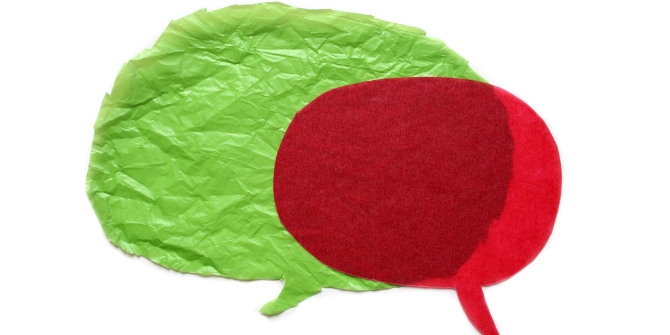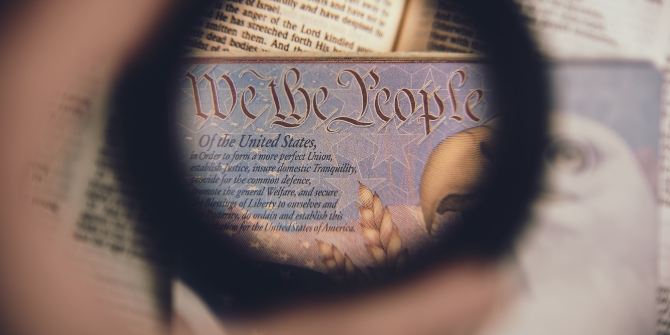 Since his election campaign, President Trump has had an adversarial relationship with the news media, branding them the “enemy of the people” after his inauguration. Porismita Borah writes that during the current Covid-19 emergency, the President has continued to fuel public distrust for the media as well as making inaccurate statements about the threat the virus poses. She argues that Trump’s poor relationship with the media has made the pandemic even worse, as many of his supporters ignore advice from authorities like the Centre for Disease Control.
Since his election campaign, President Trump has had an adversarial relationship with the news media, branding them the “enemy of the people” after his inauguration. Porismita Borah writes that during the current Covid-19 emergency, the President has continued to fuel public distrust for the media as well as making inaccurate statements about the threat the virus poses. She argues that Trump’s poor relationship with the media has made the pandemic even worse, as many of his supporters ignore advice from authorities like the Centre for Disease Control.
As the Ukraine scandal and his own impeachment have recently shown, President Donald Trump is no stranger to being criticised for how he communicates with the media. Right after his first press conference as president in 2017, Trump tweeted that the media were “the enemy of the people”. Trump’s communication to reporters and to the larger public regarding the ongoing global Covid-19 pandemic has been no different. The Covid-19 outbreak was identified in Wuhan, China in December 2019, and was declared a global pandemic by the World Health Organization on March 11, 2020.
The media has accused Trump of misleading the American public about this global pandemic. In an interview with CNBC in Jan 21, 2020 Trump had said “We have it totally under control. It’s one person coming in from China, and we have it under control. It’s going to be just fine.” Around March 5th and 6th, Trump repeatedly said that the virus was going to go away. At a rally in February, Trump said “Looks like by April, you know, in theory, when it gets a little warmer, it miraculously goes away.” On Feb 26, Trump claimed that “We’re very close to a vaccine.” However, health experts say that a vaccine for the virus available for commercial consumption is at least a year away. Multiple drug companies explained to the president that a new vaccine will take at least a year, and yet Trump told journalists at a press conference that the scientists are close to making a vaccine available “I’ve heard very quick numbers, matter of months.”
The Coronavirus has a much higher fatality rate than the common flu, and yet on multiple occasions Trump compared the Covid-19 numbers with those of seasonal flu, which could be misleading. Trump also communicated that Covid-19 tests were available for everyone; he said on March 6th “Anybody that wants a test can get a test.” However, that was far from the truth. By mid-March, Trump started changing the rhetoric from denying the gravity of the situation to saying “We have a problem that a month ago nobody ever thought about” and “I felt it was a pandemic long before it was called a pandemic.”

“White House Press Briefing” by The White House is Public Domain.
The media’s role in the Covid-19 pandemic
Before President Trump announced the seriousness of the situation, multiple media organizations including Fox News were downplaying the critical nature of the Covid-19 situation. Recent polls (e.g. Gallup and Pew Research) showed that Republicans who did not trust the mainstream media and whose central news source was Fox News and other right-leaning media, were much “less likely to take the risks of the coronavirus as seriously as their Democratic counterparts”. The Pew Research survey found that 79 percent who were Fox News viewers said the risks of the virus was hyped by the media.
The president changed his rhetoric from the virus “will go away” in early March to “this is a pandemic” on March 17th. By March 26th, the US made headlines across the globe for having the most number of Covid-19 cases. “The epicentre is now the US” said the L.A. Times and “US Virus cases top world” from the New York Times. Was Trump’s initial refusal to take the situation seriously at the core of the problem in the US? Some say yes, while others say it was not.
We can’t place blame for the global Covid-19 pandemic solely on Donald Trump; multiple factors have come together to put US in this situation today. Although it might not be all Trump’s fault, he has been criticized for various problems such as dismantling the pandemic unit in 2018 and for not listening to warnings from scientists and the US Intelligence. Perhaps one of the biggest problems Trump created was circulating misinformation. From calling the coronavirus, the common flu, describing the situation as a media hoax, to prescribing malaria medicine to treat COVID-19 has been exceptionally damaging. Although there was enough information that the Covid-19 situation could turn dangerous as early as January, it was only in mid-March that Trump publicly recognized the gravity of the situation. Until then a majority of Americans did not pay attention to the virus, to the extent that Florida was flooded with spring breakers. In March, Florida’s beaches were full of people who ignored all guidelines about social distancing.
Trump’s downplaying a global pandemic in the beginning and calling it a hoax and media hype is at the core of his relationship with the media, the “enemy of the people”. Leading a country to believe that the press should not be trusted is dangerous at many levels. We may not always immediately see the consequences of the dangers of such attacks against the press. But the Covid-19 situation is a unique case where we can immediately see how his distrust of the media translated to people ignoring the guidelines from organizations such as the Centre for Disease Control. As demonstrated by the polls (Gallup and Pew Research), Republicans who did not trust the news media were less likely to take the Covid-19 situation seriously; and, 79 percent of Fox news viewers said the situation was an instance of media hype.
While health professionals, scientists, and the news media (excluding Fox news and other right-wing organizations) continued to lay out the reasons for social distancing and flattening the curve, Trump continued to tweet about the news media as “Fake News CNN”, “LameStream media” and “Fake News NYT”. As the Covid-19 cases continued to grow exponentially in the US, the president tweeted on March 25th, “The LameStream Media is the dominant force in trying to get me to keep our Country closed as long as possible in the hope that it will be detrimental to my election success. The real people want to get back to work ASAP. We will be stronger than ever before!” The unfolding pandemic allows us to see that Trump’s relationship with the media and deliberate misinformation about Covid-19 has real world and often tragic consequences.
Please read our comments policy before commenting.
Note: This article gives the views of the author, and not the position of USAPP – American Politics and Policy, nor the London School of Economics.
Shortened URL for this post: https://bit.ly/3bWFfij
About the author
 Porismita Borah – Washington State University
Porismita Borah – Washington State University
Porismita Borah is an Associate Professor in the Edward R. Murrow College of Communication, Washington State University. Porismita’s main areas of research interests are emerging communication technology in the context of politics and health. Porismita’s research has been published in many prestigious journals including Journal of Communication, Communication Research, Journal of Computer Mediated Communication and New Media and Society. To learn more about Porismita’s work, please visit her website.






